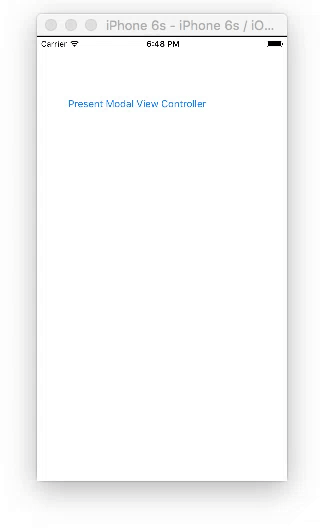谁能给我示例代码,我可以使用该示例代码首先呈现一个模态视图控制器,然后将其关闭?这就是我一直在尝试的:
NSLog(@"%@", blue.modalViewController);
[blue presentModalViewController:red animated:YES];
NSLog(@"%@", blue.modalViewController);
[blue dismissModalViewControllerAnimated:YES];
NSLog(@"%@", blue.modalViewController);
这段代码在viewDidLoad中(“ blue”和“ red”都是UIViewController的子类)。我希望我将显示红色视图,然后立即将其隐藏起来,并带有一些动画。但是,这段代码仅呈现模态视图,而不会将其忽略。任何的想法?第一个日志显示“空”,而其他两个日志显示<RedViewController: 0x3d21bf0>
另一点是,如果将这段代码放在applicationDidFinishLaunching中:红色视图根本不会出现,并且所有日志都为“ null”

presentModalViewController:animated:已被弃用。现在,您需要presentModalViewController:animated:completion:在完成模块中使用并执行以下操作(如果您想等到red出现该操作)。无论如何,请阅读@MatterGoal建议的文章:developer.apple.com/library/ios/#featuredarticles/…。